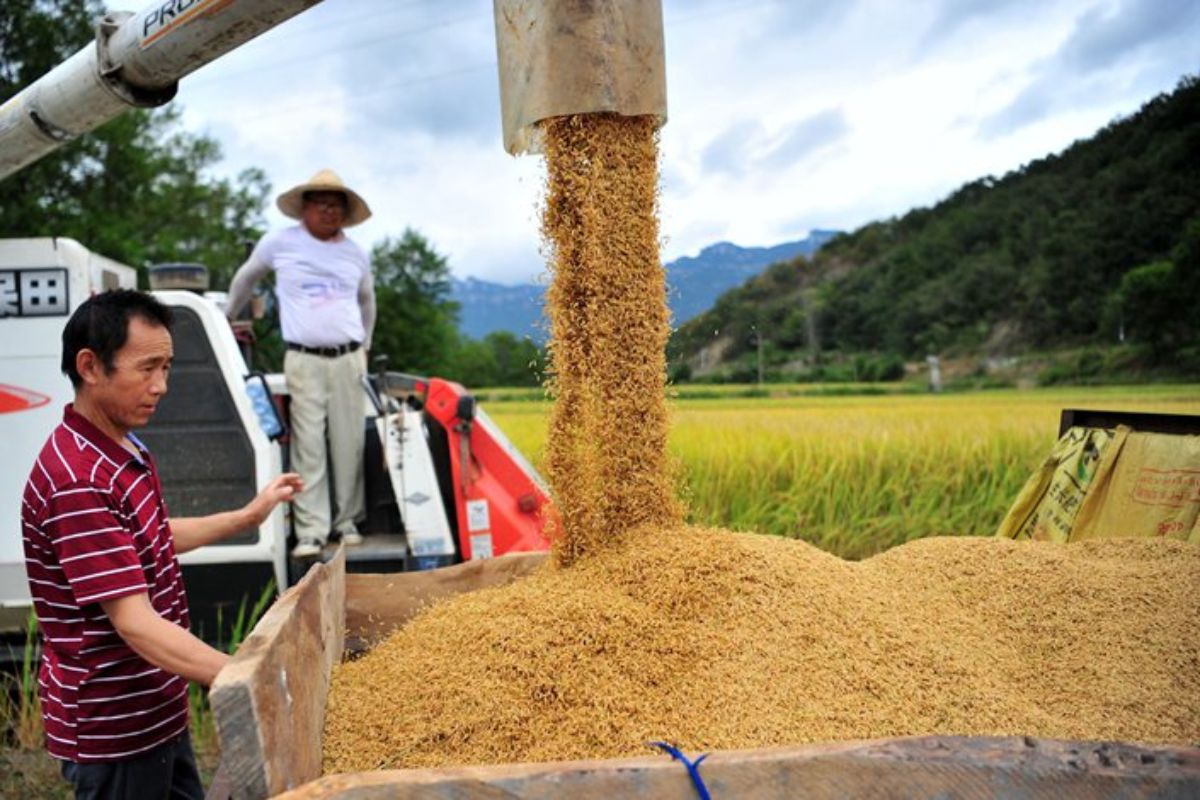Shockwaves in Wheat Market: In a surprising turn of events, Chinese wheat importers have decided to cancel their orders from Australian suppliers amidst a surplus in the market. This move is sending shockwaves through the global wheat market, raising questions about the future of wheat prices and trade dynamics.
The sudden shift in demand has left many industry experts speculating on the potential repercussions for both Australian wheat farmers and the broader international wheat trade. The implications of this decision are far-reaching and could signal a significant change in the landscape of the wheat market.
Chinese Wheat Importers Cancel Australian Orders Amid Price Drop
Chinese wheat importers swiftly cancel Australian orders amidst a sharp decline in prices. The decision to cancel or postpone around one million metric tons of Australian wheat cargoes is a strategic move in response to the current global market conditions. As international wheat prices plummet due to an abundance of world stockpiles, Chinese importers are seizing the opportunity to renegotiate contracts and secure better deals. This bold maneuver reflects the shrewdness and agility of Chinese importers in navigating the volatile wheat market landscape.
The cancellation of Australian wheat orders sends ripples through the global wheat market, signaling a shift in trading dynamics and influencing pricing trends. Australian wheat exporters now face the challenge of finding alternative buyers or adjusting their pricing strategies to remain competitive. The repercussions of this sudden decision by Chinese importers highlight the intricacies and uncertainties inherent in the international wheat trade. As market players adapt to these developments, the implications on supply chains and pricing mechanisms will be closely monitored by industry experts.
Also Read: China Economic Tightrope: Exports Dip, but Imports Surprise in October
Impact on Global Wheat Market
The upheaval in wheat trading dynamics reverberates across the global market, prompting a reevaluation of supply and demand dynamics amidst plummeting prices and surplus stocks. As the Chinese cancel Aussie wheat orders and the U.S. witnesses massive cancellations, the repercussions are felt worldwide, igniting a firestorm of uncertainty and volatility in the wheat market.
Here are three critical impacts on the global wheat market:
- Oversupply Crisis: The flood of cancelled orders reflects a global oversupply crisis, with warehouses brimming with surplus wheat and no end in sight to the abundance. This surplus exerts immense downward pressure on prices, leaving farmers and traders grappling with diminishing margins.
- Market Uncertainty: The sudden cancellations by major importers inject a sense of uncertainty into the market, leading to wild fluctuations in prices and making it challenging for stakeholders to predict future trends accurately.
- Shifting Trade Dynamics: The cancellations disrupt established trade dynamics, forcing countries to seek alternative markets or adjust their production strategies to navigate the turbulent waters of the wheat market.
Potential Market Repercussions
Amidst the tumult in global wheat markets, a seismic shift looms on the horizon, signaling potential market repercussions of unprecedented magnitude. The cancellation of Aussie wheat orders by China hints at a broader strategy to capitalize on Russia’s growing dominance in the wheat export market, potentially triggering a domino effect that could reshape the dynamics of global trade. With China’s move reflecting a bearish sentiment towards wheat prices, exporters worldwide are left grappling with the harsh reality of dwindling demand and fierce competition.
| Market Repercussions | Description | Impact |
|---|---|---|
| Decreased Export Demand | China’s actions may lead to reduced demand for Aussie wheat, impacting global export volumes. | Exporters face the risk of surplus stocks and price wars as they struggle to find new buyers. |
| Shift in Market Dynamics | Russia’s increased exports could disrupt traditional market patterns, altering price trends. | Market players must adapt to the changing landscape, reevaluating strategies to stay competitive. |
| Price Volatility | The uncertainty caused by China’s decisions may result in erratic price fluctuations globally. | Traders and investors face heightened risks and must navigate choppy waters with caution. |
News In Brief
Chinese wheat importers’ abrupt cancellation of Australian orders amid a surplus shocks the global market. The move, influenced by plummeting prices and trade dynamics, prompts speculation on wheat’s future. With one million metric tons affected, this signals a significant change. The cancellation sends ripples, impacting global supply chains and pricing mechanisms. Market experts closely monitor repercussions on trading dynamics and pricing trends. Amidst the chaos, uncertainties loom, with oversupply concerns and shifting trade patterns. The market braces for potential disruptions as players adapt to the evolving landscape.
Our Reader’s Queries
Q1 How much Wheat does China import from Australia?
A During the initial eight months of 2023, China imported 9.56 million metric tons of wheat, of which 5.7 million metric tons, equivalent to 59.6%, originated from Australia.
Q2 Where does China import its Wheat from?
A Australia, China’s primary wheat supplier, faces reduced production due to drought worsened by El Niño. Similarly, Canada, another significant wheat trading partner of China, experiences crop losses due to drought and extreme temperatures, as previously discussed by Gro.
Q3 How much Wheat does China export?
A China leads global wheat exports, accounting for 50.13% of the total, valued at 2,975 thousand US dollars. Together with the second-ranking country, they comprise 100.00% of global wheat exports, estimated at 5,935 thousand US dollars.



